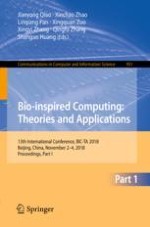2018 | Buch
Bio-inspired Computing: Theories and Applications
13th International Conference, BIC-TA 2018, Beijing, China, November 2–4, 2018, Proceedings, Part I
herausgegeben von: Jianyong Qiao, Xinchao Zhao, Linqiang Pan, Xingquan Zuo, Xingyi Zhang, Prof. Qingfu Zhang, Shanguo Huang
Verlag: Springer Singapore
Buchreihe : Communications in Computer and Information Science
